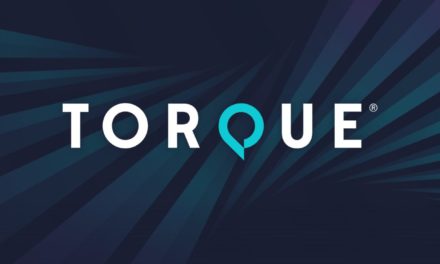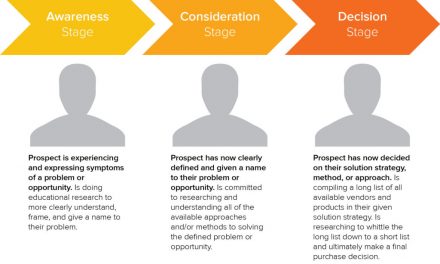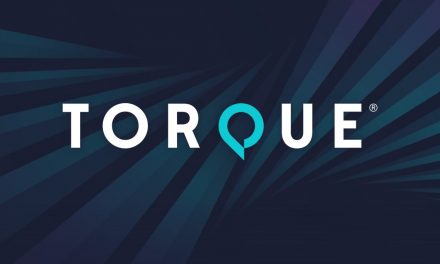No matter what kind of website you have, one thing is certain: optimizing it for search engines is a must if you want to reap the benefits of organic traffic. But, in order to do that, you have to be familiar with SEO best practices. For that, it helps keep track of the history of SEO and how it has evolved with time.
Since SEO is a complex topic, it requires research and practice to get familiar with it. Knowing why things are the way they are can help you improve your SEO strategy and better understand how to optimize your site. That’s why it’s a good idea to start at the beginning.
In this timeline of SEO history, we will take a walk down memory lane to see how search engine optimization got its start and how it changed over the years that followed.
The Early Years: Mid 1990s – Early 2000’s
Although the first website was created in 1991, the official SEO history starts a bit later in 1997. It was then that the manager of the rock band Jefferson Starship discovered the band’s website is on page four of the search engine results page. He was reportedly quite upset by that fact.
As a result, the company who built the band’s website decides to focus on the mystery of search engine ranking — by stuffing the name of the band on the page a few more times. And thus, the field of SEO is born.
The Beginning of SEO

Back in the early days, it’s like the wild west. The motto is “anything goes.” You can leverage any tactic and get away with it. Keyword stuffing is the law of the land and the fastest way to get your website to show up on page one for the desired keywords. Along with that, people-in-the-know rely primarily on (what is now known as) black hat tactics to get their websites to rank.
Search engines, as we know them now, are brand new and updates take months to roll out. However, during that time, a few other notable developments in SEO take place:
- In 1994, two students from Stanford University launch Yahoo. The original version of Yahoo is nothing more than a list of interesting sites. If you want to appear in the search results, you have to manually submit your website to Yahoo and request indexing. This is also the year that AltaVista, Excite, and Lycos come into being.
- In 1996, Larry Page and Sergey Brin create Backrub. This search engine uses inbound link relevancy and popularity to rank websites. It would eventually become Google.
- A year later, in 1997, Danny Sullivan starts Search Engine Watch. It’s set to become one of the primary sources of information about SEO, tips on Internet search, and ranking better in search engines. This is also the year the Google.com domain is registered and AskJeeves launches.
- In 1998, we see the emergence of paid search and sponsored links thanks to the launch of Goto.com. Advertisers can place bids that allow them to rank above organic search results.
- Finally, in 1999, Search Engine Strategies, a conference dedicated to search marketing takes place for the first time. It continues to run under various names until 2016 when it shuts down for good.
Black Hat Gets a Bad Rep: Early 2000s – 2005
Up until the early 2000s, Google is still a little known search engine. But thanks to its partnership with Yahoo, it quickly rises in popularity: every Yahoo search result displays “Powered by Google”. This will eventually lead to Google becoming a synonym for search as we know it today.
It’s also during those early years that the search engine introduces the PageRank algorithm. It looks at both off-page and on-page factors to determine the rank of a website in search results. More specifically, the algorithm examines both the quantity and quality of external links as well as anchor texts.
The result of this is the rise of link-building and webmasters buying and exchanging links in an effort to improve their website’s rank.
It’s also during this time that Google acquires Blogger.com and launches AdSense. Both leads to a surge in the creation of websites filled with keywords and thin content in order to monetize them.
The First Google Algorithm Upgrades
All of the above leads to the first major Google algorithm update in 2003 dubbed Florida. It launches during the holiday shopping season and hits a number of legitimate commercial websites pretty hard.
The update relies on filter tests to do away with keyword stuffing, invisible text, and hidden links. Although it’s meant to combat spam tactics, as a result of it, many retailer sites see reduced traffic just in time for the shopping season. The outcry is huge and Google promises not to roll out major updates during holiday season again.
The Jagger update comes next in 2005. It helps to diminish rampant link exchanges and leads to the decline of anchor text as a ranking factor.
However, not everything that happens during the early 2000s is bad. In 2004, local SEO gets its start when Google and other search engines of the time begin to improve the relevance of search results with geographic intent.
Another important keystone of the era are the beginnings of personalized search. Engines start using search history and interests to display more relevant results.
Dynamic Search Takes Off: Mid 2000s – 2009
Things start changing for the better from 2006 onward. It’s during this time, more specifically in 2006, that Google launches Google Analytics and Google Webmaster Tools. Thanks to these two tools, you can now easily see how your website is doing in search engines and understand how to improve it.

Google also acquires YouTube which is now the second largest search engine in the world.
In addition, XML sitemaps gain universal support. This allows search engines to better understand websites and crawl every page on them.
2007 also marks the beginning of Universal Search as Google starts displaying images, videos, and news in their search results.
Then, in 2008, Google decides to shift their focus to brands and trust as ranking factors as a way of cleaning up the “cesspool” that the Internet has become. The result is the Vince update which emphasizes these factors.
By then, Google pretty much dominates the search engine landscape. Smaller search engines like Bing and Yahoo have fewer users and form The Search Alliance in 2009 as a result.
The late 2000s also see the rise of social networking platforms like Facebook, Twitter, and others. Thanks to this, social signals start playing an indirect role in the ranking of websites.
Quality Becomes the Focus: Early 2010s
Things really start to take a dramatic turn in the early 2010s. For one, search engines change their algorithms and focus on content quality as the primary ranking factor.
This is the direct result of the two major Google updates Panda and Penguin, which roll out in 2011 and 2012 respectively. Both of these updates aim to combat content farms — websites that produce lots of content of low quality.
While Panda focuses on doing away with content farms, Penguin targets websites with unusual linking patterns, high amounts of exact match anchor text, and keyword stuffing.
As a result, some big brands, like JCPenney, see their reputation damaged and their traffic vanish practically overnight.
On the positive side of things, 2012 marks the year when Google Knowledge Graph launches. The Knowledge Graph focuses on interpreting semantics and search intent instead of just interpreting keywords.
This, along with the rise of mobile and voice search, leads to the next major update in 2013, named Hummingbird. This update eventually becomes part of Google’s core algorithm, much like Panda and Penguin before it. Hummingbird’s aim is to better address natural language queries and conversational search.
Mobile Everything: Mid 2010s
Although mobile phones have been with us for quite some time by then, they don’t play a huge role in the search engine world until 2015. That’s when mobile searches surpass desktop search for the first time. It is, accordingly, sometimes called the “Year of Mobile”.
During this time, Google and other search engines start placing more emphasis on mobile search and issue guidelines for optimizing websites for mobile devices.
Responsive design becomes the norm and webmasters take to overhauling their websites in an effort to make them look good on phones and tablets.

It’s also during this time that Google starts improving local search. Accordingly, mobile optimization paired with local SEO becomes a top priority for any webmaster.
The most notable Google algorithm update of the time is what’s known as “Mobilegeddon” in webmaster circles. Its original name is simply “Google Mobile Friendly Update” and it comes out in February of 2015. It firmly establishes the mobile-friendliness of a website as a ranking signal. It’s also the first update that Google officially announces before rolling it out.
Mobilegeddon follows Accelerated Mobile Pages (AMP) in 2016. Pages that make use of AMP technology benefit from content that loads instantly. Their users are predominantly news media and publishers.

Faster, Better, Contextual: Late 2010s – Now
The previous era’s focus on high-quality content continues to this day, albeit with added factors. For starters, mobile-first and responsive design still rule and play a major role in the rank of any website.
However, page speed and contextual clues are now also ranking factors. Consequently, sites with fast loading times, strong internal linking, site indexes, keyword clustering gain favor in search engine results.
2017 marks the year when Google starts issuing Chrome HTTPS warnings for sites that ask for user data but don’t have an SSL encryption in place.
A number of updates roll out that further penalize websites with low quality content and those that display interstitials and pop-ups which contribute to poor user experience.

RankBrain, Mobile First, E-AT, BERT
Google’s CEO declares Google an AI-first company. It marks the beginning of yet another era in the search engine landscape and is visible in Google RankBrain, which aims to interpret search intent based on words or phrases entered.

In 2018, Google announces the Mobile-First Index. Since then the search engine uses the mobile versions of websites to create its index rather than desktop websites.

This is also the year when the E-A-T update rolls out. Its focus is rewarding websites that adhere to Google’s Expertise, Authoritativeness, Trustworthiness (E-A-T) guidelines.
GDPR, the EU general data protection act comes into effect in 2018 and poses some serious implications for search engines as personalized searches continue to dominate the SEO scene.
In 2019, the BERT update follows. It introduces the biggest change to Google’s algorithm in years. BERT primarily focused on the interpretation of long-tail searches in an effort to display more relevant search results.
As we venture into a new decade, voice search is further on the rise and visual search is becoming better and better every day. Chatbots and AI personal assistants like Apple and Cortana are becoming more prevalent as is other future technology. It is safe to assume they will continue to play a larger role in the world of SEO.
A Basic Timeline of SEO History
SEO can sometimes feel like you’re throwing a bunch of tactics at the wall to see what sticks. But knowing where everything comes from and how we got to where we are can offer real insight into how to best optimize your site in the here and now.
In a nutshell, the development has aimed at delivering searchers and users results of higher quality and relevance. At the same time, Google also has made changes, e.g. to its layout, that are clearly aimed at improving its revenue.
The future of SEO will likely continue to be a balancing act for everyone between serving visitors and fulfilling business goals. It will be interesting to see how this development continues.
What have you learned about the history of SEO that impacts how you optimize your website? Share your thoughts in the comments section below!











